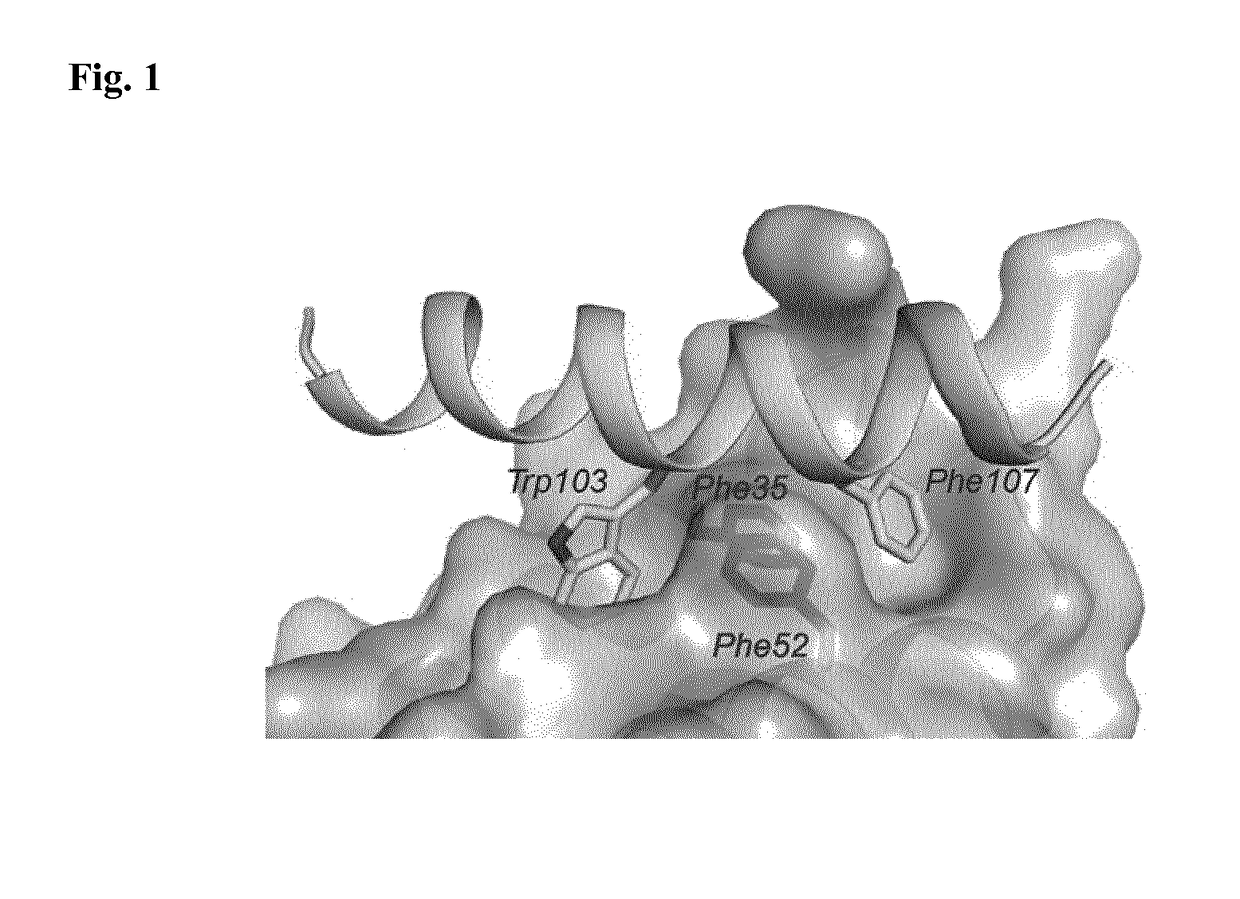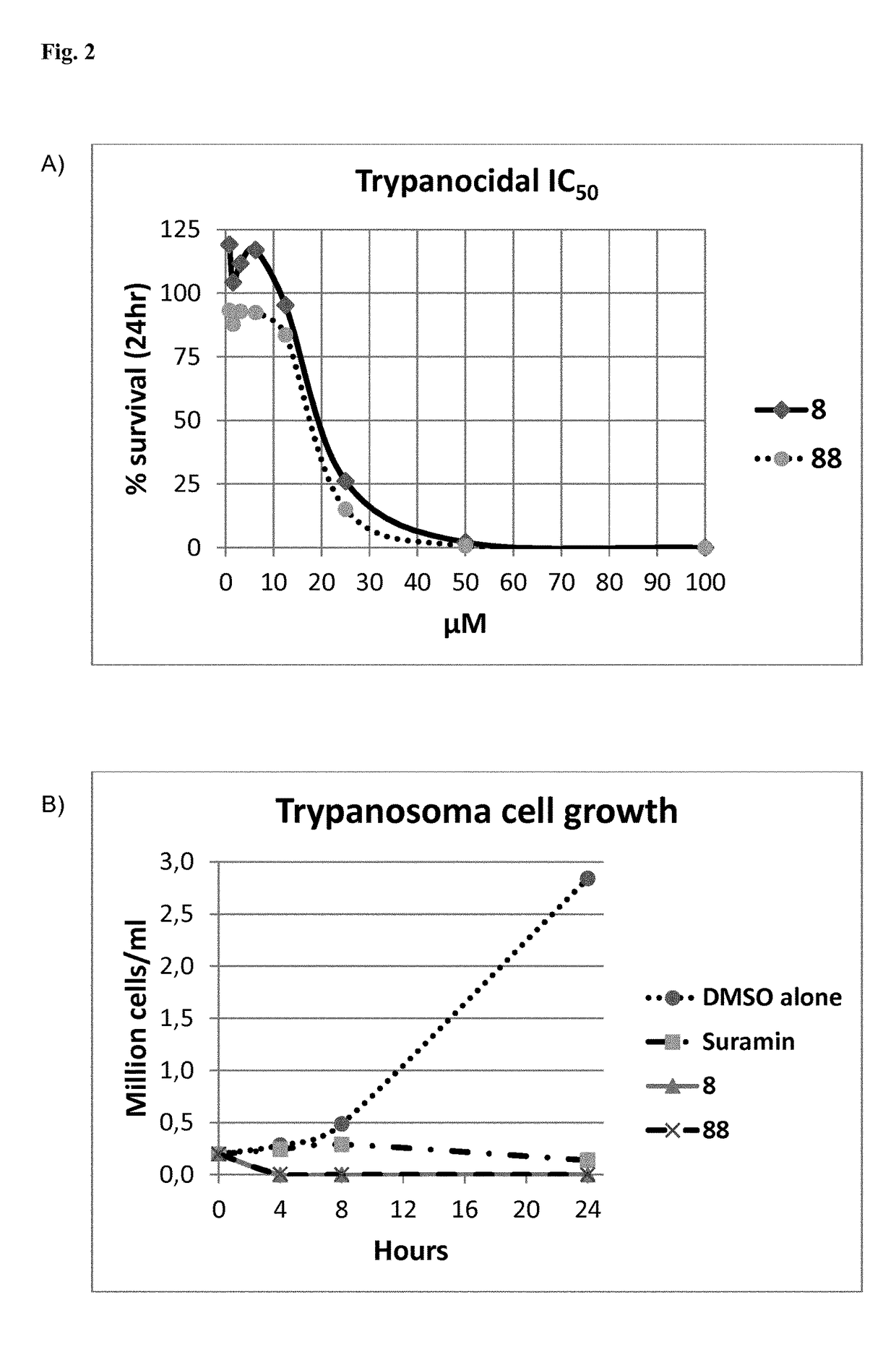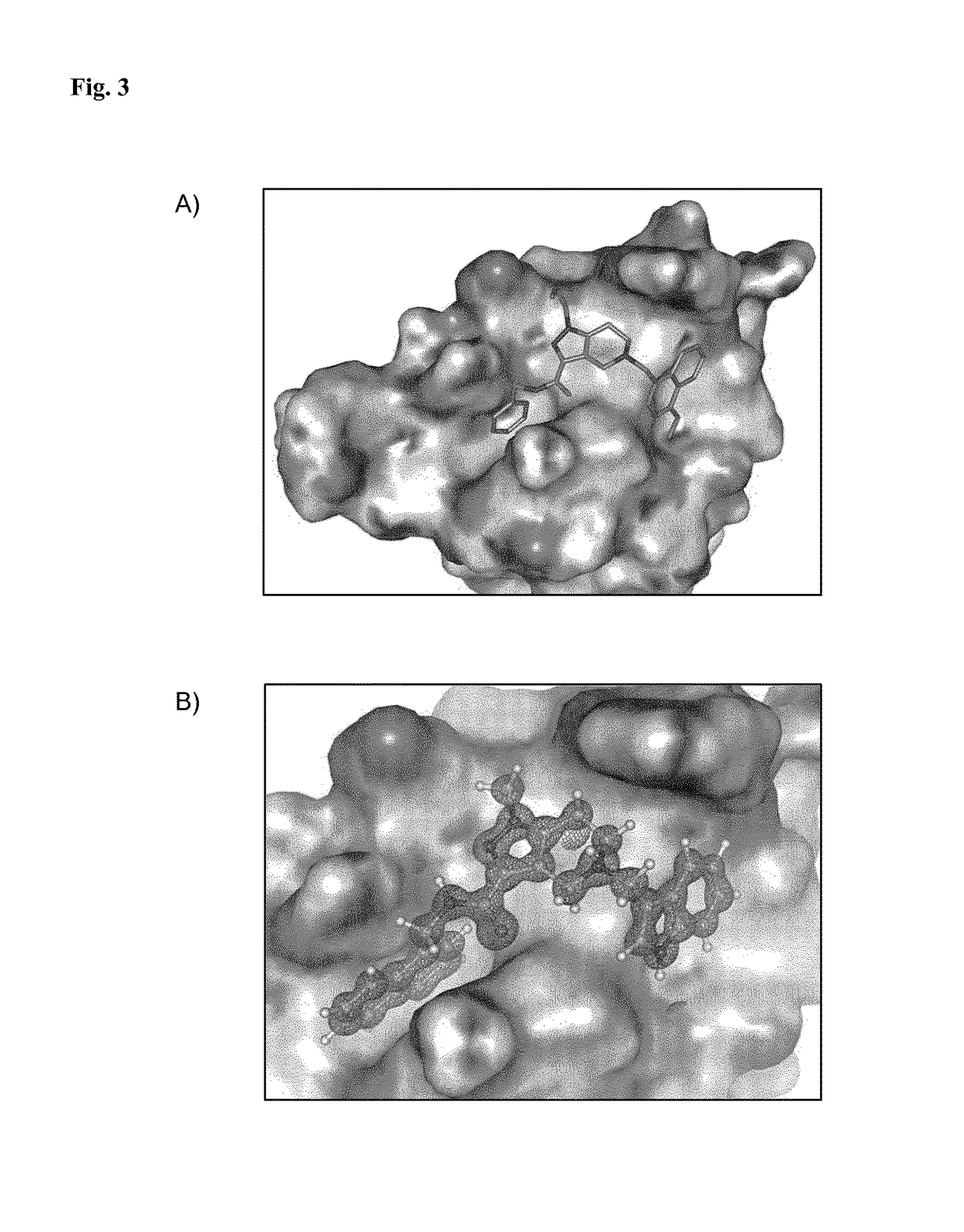Pyrazolopyridine derivatives and their use in therapy
- Summary
- Abstract
- Description
- Claims
- Application Information
AI Technical Summary
Benefits of technology
Problems solved by technology
Method used
Image
Examples
example 1
ation of Candidate Compounds
[0213]The structure of the trypanosoma PEX14 was compared to the published structure of human PEX14 bound to PEX5 protein (Neufeld et al., EMBO J. 28 (2009), 745-54) and a model of trypanosoma complex created by molecular modeling (cf. FIG. 1). The structure of unbound trypanosoma PEX14 was used for the model generation. The interface model was subsequently used to create a 3D pharmacophore binding model which—together with pharmacophore-based software Pharmer—was utilized for screening and identifying compounds which bind to PEX14. Then, the results were docked to the trypanosoma model of PEX14 protein using AutodockVina. The docking poses were inspected and several candidate compounds which were found by this procedure were selected for in vitro testing using the AlphaScreen assay; cf. Example 3. Compounds which were found active in this in vitro assay were selected for further studies and optimization.
example 2
of Compound 52
Step A—5-tert-butyl 3-ethyl 2-(2-hydroxyethyl)-6,7-dihydro-2H-pyrazolo[4,3-c]pyridine-3,5(4H)-dicarboxylate and 5-tert-butyl 3-ethyl 1-(2-hydroxyethyl)-6,7-dihydro-1H-pyrazolo[4,3-c]pyridine-
[0214]
[0215]A solution of 7.50 g (37.5 mmol) of tert-butyl 4-oxopiperidine-1-carboxylate in 25 mL of dry THF was added over 30 min to a mixture of 37.5 mL of 1 M LiHMDS (37.5 mmol) and 50 mL of dry THF, at −78° C., under argon. The resulting solution was stirred at this temperature for 1 h and subsequently 5.48 g (37.5 mmol) of diethyl oxalate was added dropwise. The mixture was allowed to warm to room temperature and quenched by the addition of 10 mL of glacial AcOH. Subsequently, 75 mL of absolute EtOH and 2.85 mL (37.5 mmol) of 2-hydroxyethylhydrazine were added. The resulting mixture was refluxed for 2 h and stirred at room temperature overnight. The solvents were evaporated under reduced pressure. The residue was partitioned between 100 mL of AcOEt, and 30 mL of saturated aque...
example 3
en Assay
[0223]We have used an AlphaScreen assay to measure in vitro activity of PEX14-PEX5 binding inhibitors. The assay uses two types of beads: donor beads are coupled with streptavidin, and acceptor beads are coupled with an anti His-tag antibody. Upon excitation with light of a wavelength of 680 nm the donor beads produce reactive oxygen species that travel in solution only for a limited distance. If the acceptor beads are within that travel distance, it will absorb the reactive oxygen and emit light in the range of 520-620 nm. In our assay we have used biotin-coupled PEX5 peptide (coupling to donor beads) and His-tagged T. brucei PEX14 (coupled to the acceptor beads). Thus, PEX5-PEX14 complex dissociation by a ligand caused decrease in light emission as the donor and acceptor beads were separated. Typically, we used 30 nM PEX5, 30 nM PEX14 and bead concentrations of 5 μg / mL. The PEX5-PEX14 complex was incubated with varying concentrations of inhibitor for 1 hour. Next, the bead...
PUM
 Login to View More
Login to View More Abstract
Description
Claims
Application Information
 Login to View More
Login to View More - R&D
- Intellectual Property
- Life Sciences
- Materials
- Tech Scout
- Unparalleled Data Quality
- Higher Quality Content
- 60% Fewer Hallucinations
Browse by: Latest US Patents, China's latest patents, Technical Efficacy Thesaurus, Application Domain, Technology Topic, Popular Technical Reports.
© 2025 PatSnap. All rights reserved.Legal|Privacy policy|Modern Slavery Act Transparency Statement|Sitemap|About US| Contact US: help@patsnap.com



